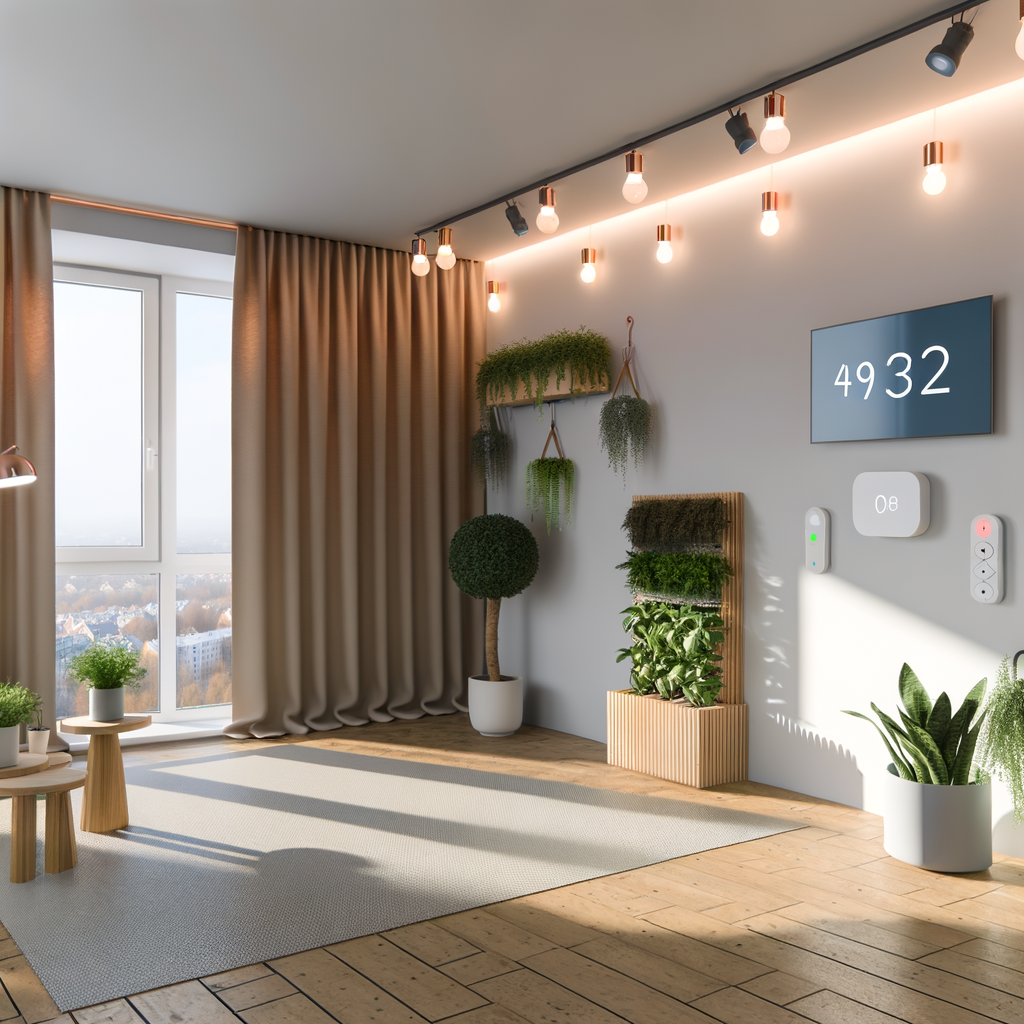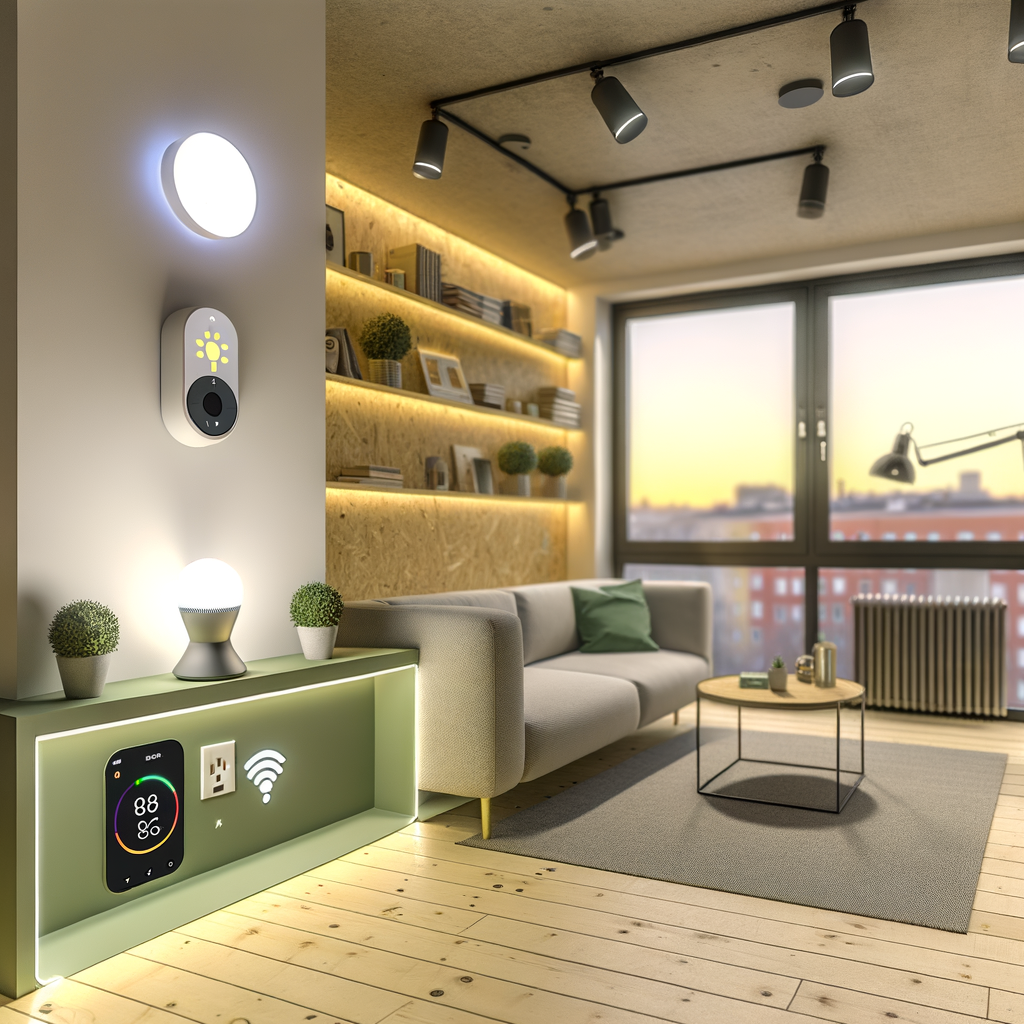How to Turn Your Rental Into a Smart, Energy-Efficient Home—Without Upsetting Your Landlord
Living in a rental doesn’t mean you have to sacrifice modern comforts or efficiency. With today’s smart technology and plug-and-play solutions, renters can upgrade their homes for better energy performance and convenience—without risking their security deposit or breaching their lease.
This guide walks you through practical, landlord-friendly ways to make your rental both smart and energy-efficient. From low-investment gadgets to savvy tips, you’ll discover how to lower bills, reduce your environmental impact, and create a more comfortable space.
Why Making Your Rental Smart and Energy Efficient Matters
Energy efficiency and smart tech aren’t just homeowner perks. Renters can also:
- Save money on monthly utility bills.
- Reduce carbon footprint and environmental impact.
- Add convenience through automation.
- Boost comfort with personalized settings.
- Increase security and peace of mind.
Best of all, most of these upgrades move with you when you change rentals.
Check Your Lease (and Communicate With Your Landlord)
Before making changes, always review your lease agreement. Many leases prohibit alterations that are “permanent” or require drilling, hardwiring, or paint. However, REMOVABLE smart-tech and plug-in devices generally don’t break any rules.
For anything ambiguous—like swapping a thermostat or installing window sensors—ask your landlord. Explain the benefit (e.g., lower utility bills, smart smoke alarms), and highlight that you’ll revert any changes when you move out.
Smart & Energy-Efficient Upgrades That Require Zero Tools
1. Smart Lighting: Simple, Screw-in Solutions
Standard lighting is a big energy draw. Switch to smart LED bulbs that screw into existing sockets—no rewiring needed.
- Remote control: Use your phone or voice assistant to turn lights on/off or adjust brightness.
- Scheduling & automation: Set timers or routines for energy savings.
- Color temperature options: Match lighting to your mood or time of day.
Installation: Swap out the bulb and connect to your Wi-Fi or hub—done in minutes!
2. Smart Plugs and Energy Monitoring Outlets
Take control of lamps, fans, coffee makers, or any appliance with a smart plug. There’s no installation—just plug the device into the outlet and connect via app.
- Remote power: Shut off devices from anywhere.
- Activity schedules: Automate on/off cycles for energy savings.
- Energy monitoring: Track consumption and identify energy hogs.
This is ideal for optimizing hard-to-access outlets or reducing “phantom” energy drain from electronics in standby mode.
3. Smart Power Strips
Upgrade your surge protector to a smart strip that lets you manage each outlet remotely. Automatically cut power to multiple devices at once, drastically reducing wasted energy.
- Individually controlled outlets for customized control.
- Energy monitoring with companion apps.
- Works with voice assistants (Alexa, Google Home, etc.).
4. DIY Window Insulation & Smart Curtains
Old windows are drafty and waste energy. Renters can use removable weatherstripping or clear shrink-wrap insulation kits (applied with a hair dryer) to seal leaky windows in winter. These solutions won’t damage frames and peel off easily.
For even more savings, consider smart curtain motors or battery-powered shades that open/close on schedules or via sunlight sensors.
- Simple adhesives: No holes or drilling required.
- Reversible: Restore windows to their original state on move-out.
- Extra insulation: Use blackout or thermal curtains for year-round comfort.
Easy, Landlord-Approved Smart-Home Upgrades
1. Smart Thermostats—With No Hardwiring Needed
Many landlords frown on swapping the thermostat. But recent models are designed for renters—simply attach them to your wall (via adhesive strips) or use portable smart thermostat units that don’t connect directly to HVAC wiring.
- Learning algorithms: Optimize comfort and savings.
- Remote access: Warm up or cool down the home from your phone.
- Easy install: Battery-powered or stick-on models require no wiring.
Tip: Always check with your landlord before swapping thermostats! Keep the original and re-install before moving out.
2. Portable Smart AC Controllers
If you use window or portable AC units, smart AC controllers can automate settings, schedule cool-downs, and optimize usage for energy savings. These devices use infrared (IR) to send commands—no permanent attachment required.
- Set schedules to reduce waste and maximize comfort.
- Control remotely to avoid running AC when you’re out.
- Monitor energy use through integrated apps.
3. Smart Sensors (Temperature, Motion, Humidity)
Battery-powered smart sensors are fully removable and attach with double-sided tape or magnets.
- Motion sensors: Trigger lights or alerts without rewiring.
- Temperature/humidity sensors: Optimize climate control and get water leak alerts.
- Placement flexibility: Move sensors as needed, leave no damage upon removal.
4. Removable Smart Security Devices
Peace of mind is priceless. New renter-friendly smart security options provide protection without hardwiring.
- Wireless cameras: DIY install on shelves or with magnetic bases—no drilling.
- Backdoor sensors: Monitor entryways without modifying doors and windows.
- Video doorbells: Mount with adhesive or use battery-powered freestanding versions.
Reminder: Always consult your landlord if any devices will be in shared spaces or visible from outside.
Low-Tech, High-Impact Energy Savings
High-end gadgets are great, but small behavioral tweaks are just as effective at improving efficiency—no approval required.
1. Use Fans (Ceiling or Portable) Wisely
Fans cost pennies per hour and can make rooms feel 4°F cooler, letting you raise the thermostat. In winter, reverse ceiling fans to push hot air downward.
- Stand-alone fans: Choose energy-efficient models with timer options.
- Don’t run fans in empty rooms: They cool people, not spaces.
2. Draft Stoppers and Door Snakes
Block cold or hot air from entering or escaping rooms via doors and windows. Draft snakes and stoppers require zero installation and are inexpensive.
- Lay along floor base where air leaks are found.
- Remove instantly for cleaning or moving.
3. Adjust Water Heater Settings
If your rental allows access to the water heater, lower the temperature to 120°F (49°C). It’s plenty hot for most uses and can cut energy use up to 10%. If not, ask your landlord for permission—it’s a win-win for both of you.
4. Window Coverings for Every Season
Use thermal blackout curtains to keep heat in during winter and sun out during summer. They’re renter-friendly, require just a tension rod, and make a notice




